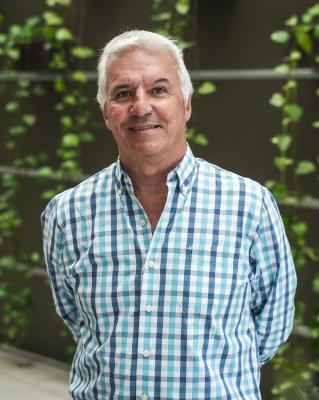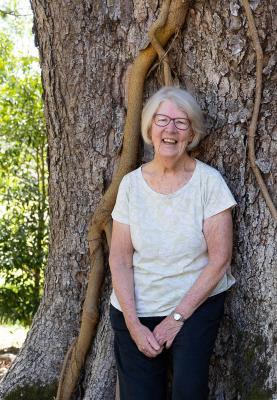A Noosa Council proposal to change the way it distributes the long-standing tourism and economic levy in the 2021-22 budget is set to “explode”, according to sources inside Council and Tourism Noosa.
Tourism industry and local government insiders were this week calling the proposal the death knell for a 20-year equal partnership between Council and the shire’s biggest industry. In a submission to council, former councillor and inaugural Tourism Board member Vivien Griffin wrote: “This is a change of extraordinary magnitude for the tourism industry, yet it has been introduced at the last minute almost as an afterthought, with no consultation with the industry and no prior warning in the first round of budget community consultation. This casual attitude to the major employer in the shire could almost be perceived as arrogant and is particularly offensive given the COVID challenges that the industry has faced in the past 12 months. It would appear that a multi-million dollar industry has been thrown into disarray without serious thought being given by Council to the consequences of the proposal.”
The brief community consultation period ended on Monday (although it appeared to have been extended to Tuesday) but not before an “urgent message” from Tourism Noosa chair Richard Stevens had resulted in a tsunami of protests. Mr Stevens wrote to members: “Toward the end of this year, Tourism Noosa will be working with Council to negotiate a new contract to continue its operations in 2022 and beyond. I would like to draw your attention to the second page of the 2021-22 Draft Budget information sheet 3 – Proposed changes to General Rates and Levies, and section 2 under Levies:
“‘Tourism promotion and economic development activities have evolved into core Council business. As such it is now considered that tourism and economic development activities should be funded by general rates (applied only to those properties who are currently paying the levy) rather than through the continuation of a special levy.’
“This statement provides a fundamental change to the transparency of how Noosa Council accounts for rate payers’ Tourism Levy funds, and if they are being used in the best interest of tourism and the economy in Noosa.”
Current Councillor Amelia Lorentson, who is also the Council observer on the Tourism Noosa board, told Noosa Today this week that her dual roles made it difficult for her to comment at this stage, but she said: “What I can tell you is that I agree that there is going to be explosion over this, and it’s going to get worse before it gets better. But, as we’ve seen before in Council, sometimes the best outcomes come after conflict.”
Being a former councillor, Vivien Griffin could be more explicit. “Quite frankly I was gob-smacked”, she told Noosa Today. “This has come out of the blue, well after the first round of budget consultation, and apparently without evidence or advice.”
Like many others from the industry itself, Ms Griffin’s detailed submission to Council did not hold back: “The proposed change exhibits no understanding or valuing of the extraordinary and innovative partnership which has been nurtured by previous councils and Tourism Noosa over two decades. It was the tourism industry which approached the Abbot council, seeking the levy as a way of building a sustainable tourism industry enabling certainty in investment. A partnership emerged in which Council collected and disbursed funds while fulfilling an overall quality control role on behalf of its community … The change from collecting funds via a levy versus bundling them up in general rates has enormous significance, since the Local Government Act specifically requires that levy funds be used for the purpose described in the Budget documents. Funds collected via general rates go into general revenue and have no such protection. No reason has been given for the proposed change.”
Over the past five years, the Tourism and Economic Levy has raised about $3 million a year from applicable rate payers, such as tourism and commercial businesses, and now from short stay houses and AirBnBs, of which $2.52M a year has been used to fund Tourism Noosa, whose primary function is to market the tourism offerings of its 970 members to the rest of Australia and to the world. In the Noosa Shire, accommodation and food services is the largest employer, generating 3,647 (or twice the state average at 15 percent) local jobs in 2019-20. And this does not include the multiplier effect of tourism and hospitality support services and supply chains. The importance of the industry to our local economy cannot be over-estimated.
According to Richard Stevens, the removal of the legislated special levy will also remove the protection of how funds are directed to tourism promotion, compromising transparency and adding a level of complexity to Council’s financial management of the funds.
While some councillors were this week touting the line that the developing stoush would be quickly resolved once the tourism industry realized that the changes were not designed to diminish Tourism Noosa funding, others expressed disillusionment at what was either an epic fail in communications or a blatant power grab that threatened a successful working relationship between local government and industry.
Perhaps the most offensive line in Council’s draft budget was this one: “Tourism promotion and economic development activities have evolved into core Council business.” When and how did that happen, tourism operators were asking? And how did Council plan to manage their businesses? The word “arrogance” was getting plenty of airplay.
As Vivien Griffin wrote: “Council is asking the tourism sector to trust them and believe that the same funds will be disbursed in the future. In effect, Council is proposing to turn an equal partner into a supplicant, which must come cap in hand for uncertain funding dependent on the whim of Council. You cannot manage an effective destination management organisation on this basis. Council is asking the industry to accept a second-rate solution, when a first-rate approach has been successfully working for over two decades. Indeed, why on earth should the industry trust council when it makes decisions of this magnitude without consulting with the major parties affected by the change? While this council may give good faith commitments on disbursement of funds, there is no guarantee that future councils will do the same. Again, such uncertainty does not encourage serious future investment in the sector.”
While not every resident of Noosa believes that tourism is the goose that laid the golden egg, for more than 20 years a solid working relationship between Council and the industry has provided checks and balances to ensure that the visitor and resident experience can co-exist.
Let’s hope that relationship has been strained rather than severed.








